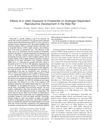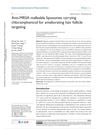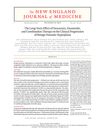Natural Variability and the Influence of Concurrent Control Values on the Detection and Interpretation of Low-Dose or Weak Endocrine Toxicities
February 2004
in “
Environmental Health Perspectives
”
TLDR Control variability makes it hard to confirm low-dose endocrine effects.
The study investigated the challenges in detecting and interpreting low-dose or weak endocrine toxicities, focusing on the variability in control values. Initial observations of an inverted-U low-dose effect of finasteride on rat prostate and weak uterotrophic activity of 4MBC were not reproducible, attributed to normal biological variability. Further analysis revealed that 4MBC and bisphenol A (BPA) showed uterotrophic activity only when control uterine weights were low. The study also reanalyzed data on BPA and other chemicals, highlighting control variability as a significant obstacle in confirming endocrine effects. Recommendations for experimental design were provided to address these challenges.





